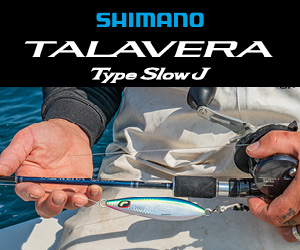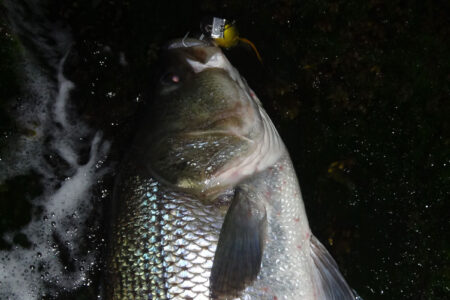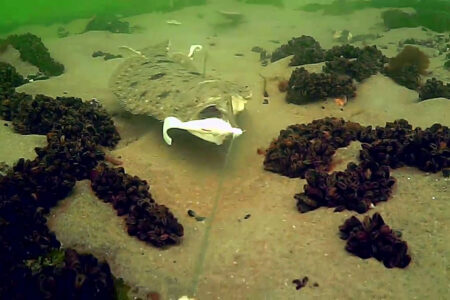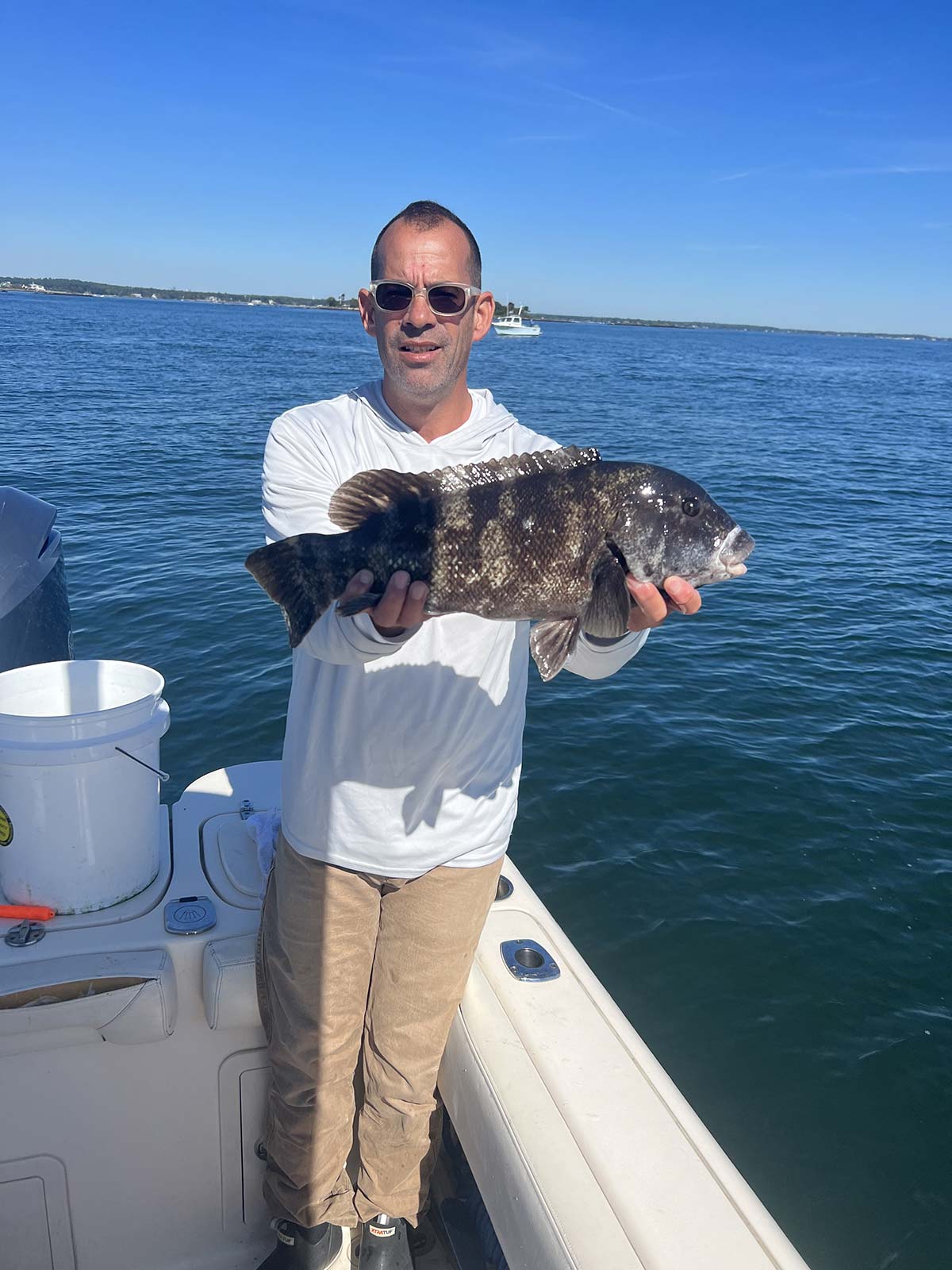
Apply small adjustments to your togging for overall larger success.
I, like many other blackfish fans, am glad the population seems to be on an upswing, and I sure hope that managers keep the trend going. In many ways, blackfish are like other fish, and in other ways, different. For example, like most fish, they get touchy when pressured, and in today’s angling world, with more anglers chasing blackfish than in decades past, there’s a lot more pressure on the species. The minimum size seems about right, and so does the bag limit, but as we release shorts again and again, sooner or later, they become a little gun-shy. Since blackfish are seasonally “glued” to a location, the pressure is relentless. Other species, such as striped bass, are caught and released, then may be miles away from the release point on the next tide and not be pressured again for weeks.
Tradition?
Although fishing for blackfish has been a traditional staple of bottom fishing, their behavior can become a little non-traditional. As we angle for and pressure them, the fish seem to exist in a “Twilight Zone.” They have to eat, yet they don’t move off the structure until water temperatures drop, but they have become very wary. The fish are on the horns of a dilemma. The bottom line is they feed much more carefully; even big fish often nibble first, which then makes them difficult to catch, yet they remain compelled to eat.
As with many species and standard angling approaches in the 21st Century, fewer fish and more anglers mean feeding competition can’t overwhelm their wariness. Again, be it stripers, blues, weakfish, or anything else, the angler who cannot or will not “read the tea leaves” and adjust is often disappointed. Adjustment requires information in order to understand the fish you seek. The information comes from noting the number of bites, how they bite, and where on the structure they bite best. Then, analyze possible meanings of this data in order to think out of the box about how to approach the blackfish. Rich Lazar and I have been doing that during the years of the comeback, and it’s paid off. We have tried many, many different techniques, and I’m sure some fans might call some of them heretical.
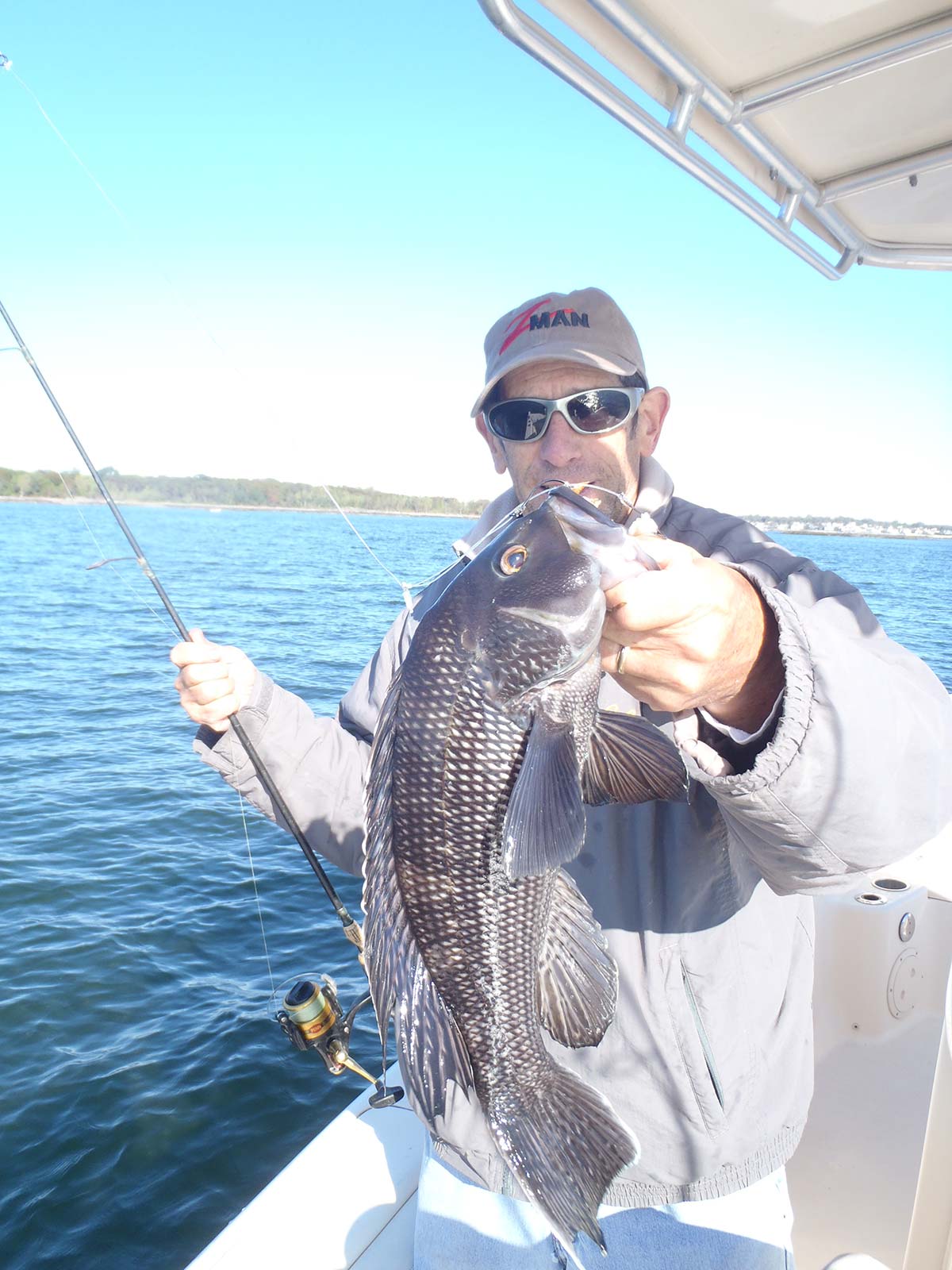
Last Fall
Take our last trip in November 2021. Rich, his son Marc, and I forged out to one of our favorite blackfish spots. A modest wind of perhaps 10 mph wandered around from west to northwest to north, and it was just strong enough to swing the boat. It became difficult to stay on the fish. Although we were alone on the piece, we disturbed the fish each time we moved and reset the anchor. It was clear from the outset that there were plenty of fish on the piece because we all got hits almost immediately. The hits were little nibbles, and that caused Rich to say, “These are small fish bites; we might have to try elsewhere.” Marc reminded us that this was not necessarily the case because the fish had been picky. I think we had 15 to 20 bites before a fish was hooked. It was a short but an “almost.” That is just a hair under the limit and fish that size shouldn’t be nibbling like sand porgies.
First Adjustment
Okay, we made the first adjustment. We let the fish eat for a while before setting the hook. Great idea! When the nibbling stopped, we reeled in our empty hooks. We did this for a while until we made a second adjustment. Rich thought he might get better hits with a small jig and a piece of crab. Again, there was no difference. Marc then suggested smaller jigs, but again, there was no difference. I thought a very small piece of crab might help. Surely, they’d have to take a tiny piece into their mouths. So, I took the shell off, used a small piece with only one leg hole to secure the hook, and after a dozen nibbles, I reeled in an empty leg hole. It was beginning to look like we anglers were also “on the horns of a dilemma.”
We continued to pick fish, but our frustration mounted as we rushed through 10 dozen crabs like a wildfire up a hill. We continued to analyze. Rich, remembering his success on our last trip, said, “I know what to do. It’s time for a Rich cocktail.” The cocktail consists of a small jig, a small piece of crab, and a small strip of clam. Although Rich was briefly excited when he caught two fish in a row, soon the nibbling returned. Then it was my turn. In recent trips, I tried sliding the bait slowly along and over the bottom structure with pauses, and I’d done well. Once again, I caught a few fish quickly, and then the incessant nibbling returned.
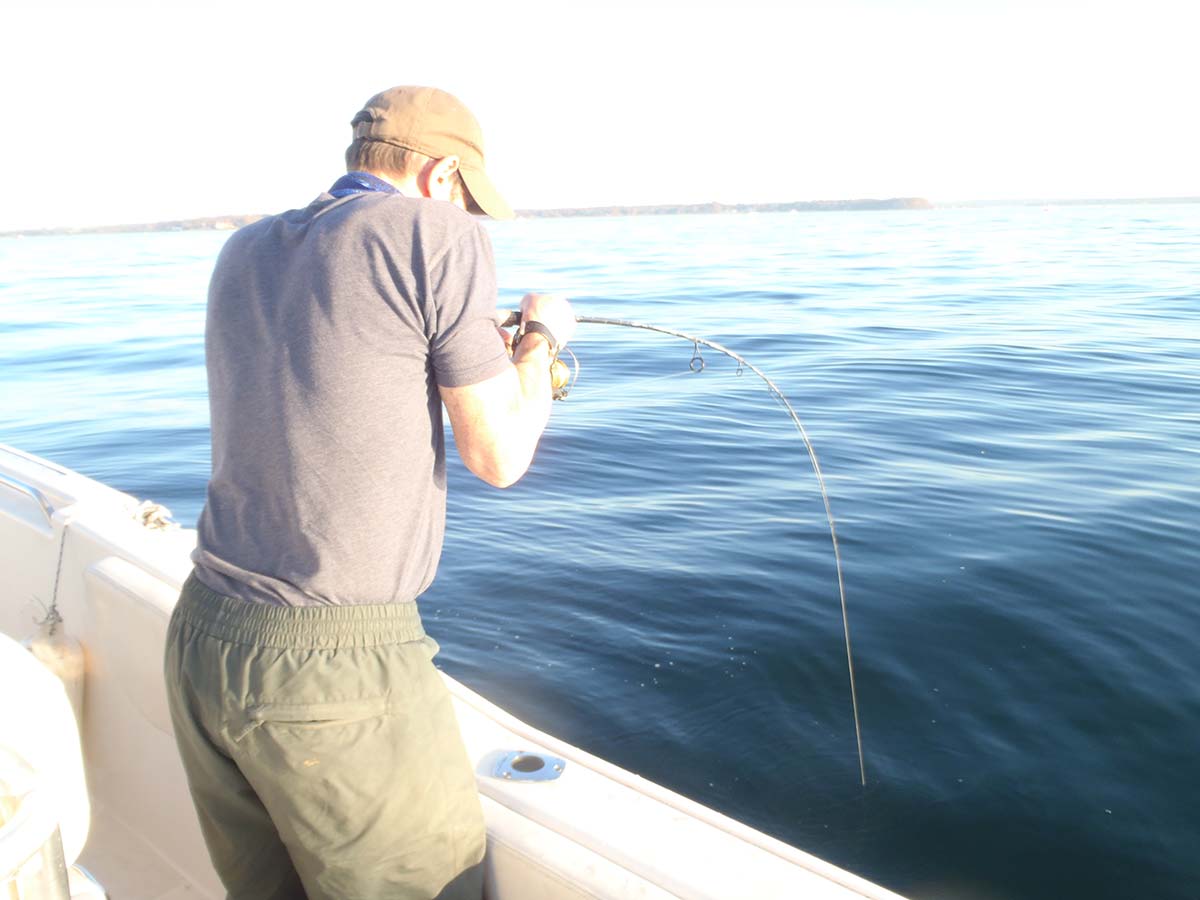
Now What?
In the old days, it was fiddler crabs or bust. Then green crabs were essential. Somehow, years ago, enterprising anglers were able to get hermit crabs consistently, and they raved about that bait. I was trained in the tradition of green crabs, and that’s what I believed in. However, each spring, we caught blackfish on shell beds using clams, and I was told to use clams because in the spring, their mouths are soft, and the crab shells hurt. I bought into that “old wife tale,” too. However, watching the behavior of blackfish in tanks steered me to a different opinion. Blackfish are aggressive feeders, and, I reasoned, they’ll eat anything they can. After all, what if their home structure lacks crabs? What would they do? Maybe it doesn’t have to be crab. For several years now, I’ve brought clams to the party and found that when the fish are fussy and wary, they’ll frequently feed more excitedly on clams, inhaling them rather than nibbling. Therefore, on this day, I switched to a clam bait and caught several fish in a row before the annoying nibbling returned. I even brought along several shrimp, but the results were the same. I’m kind of glad that shrimp didn’t work any better than anything else because if they caught better, I might go broke. Now, I’m thinking of using killifish on the hook, all wiggly and alive. I’ll bet that’ll get them!
I then tried keeping the baited hook about a foot off the bottom and jiggling it once in a while. Okay, that produced a few quick fish, too, but in a flash, the fish wouldn’t rise off the bottom for the bait anymore. Other ideas included painting sinkers with glow paint, extra-long leaders, bouncing sinkers on rocks, and, on calm days, using extremely light sinkers in hopes that the fish would not notice them. One extreme to the other. In each case, there was a brief moment in time when the out-of-the-box approach seemed to be a key to consistent success — but only a short time.
There’s just no figuring the fish out sometimes. Now and again, we’d go out to a piece, lower our rigs, and find that, for whatever reason, the fish were flat-out nuts, and we couldn’t keep them off the hook. No nibbling; just thump the bait and run. Wow, how I long for more days like that! In an attempt to find Nirvana, we’ve explored new places too, but even if we’re alone on the piece, how do we know whether or not there were a dozen boats on the piece yesterday that put the fish off?
Conclusion
It was time to take a moment and reason this out. Yes, there was a sound conclusion somewhere. It was November, as I noted earlier, the fish had been worked on for weeks, and although we were the only anglers on the spot that day, this spot and many others in the area had been hammered for weeks, and the fish were just “touchy” all the time. Sure, a change of bait or a different presentation pulled a few quick fish, but intense angling pressure caused them to “get used to” each bait and each presentation quickly, and they went back to nibbling. I don’t know what a blackfish thinks as they watch a hooked buddy shoot toward the surface. Heck, I don’t even believe they think. But they are instinctual, and research has shown that all fish get nervous around other fish who are in distress. I think a hooked blackfish is pretty upset and gives off stress vibes. If so, then a change in approach will improve the fishing, but not for long.
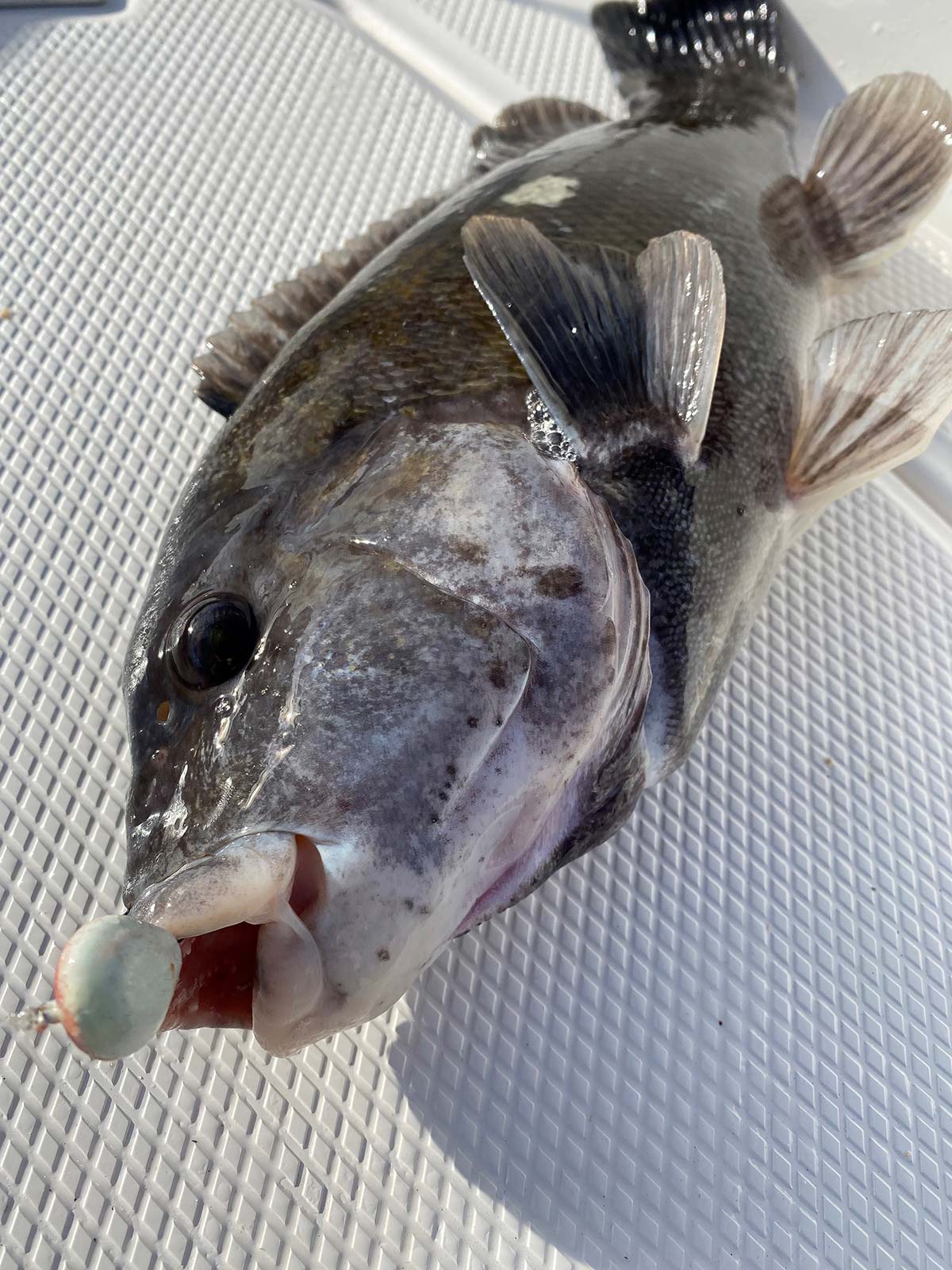
Now That I Think About It
As I sit here writing this article, I’ve had an epiphany. Perhaps it is as simple as repeatedly presenting a different bait or in a different way that momentarily overcomes their wariness. That may explain why, in spite of our frustrations, we always managed a good catch. I now realize that Rich and I have been making little adjustments to our techniques since blackfish began their comeback. When an angler adjusts to conditions and situations, be they weather, tides, waves, or fish, we usually do so gradually and by instinct. Thus, we are not always consciously aware that we’ve made changes to our baits and techniques. It’s a trial-and-error thing, but over time, we make lots of changes. An angler tries something, and it either works great, not at all, or a little bit. Over time, little bits of data about the trials accumulates in the mind, and that moves us toward a better plan. If we put a number of these slightly better changes together, we catch fish more consistently. Although I’m very aware of this when I’m in the surf during a run of fish in a boat, it kind of sneaks up on me. I need to be more aware of this in the future.
I believe many anglers have moved away from old angling “musts” and now approach black fishing differently compared to decades ago. Meat sticks are gone, light spinning gear is in, heavy mono is out, and lighter braid is in. We dismissed tarred chord leaders decades ago and replaced them with light mono leaders. Big Virginia hooks are gone, and smaller hooks are used today. Finally, we have acquired a realization that crabs aren’t essential bait. One might think, armed with this knowledge, that next fall, an angler might be able to go out and catch fish after fish without any frustration. I’m going to bet that won’t be the case. In today’s angling world, fishing is about constant adjustment and constant processing; be it done consciously or instinctively.
In any event, blackfishing is just plain fun, and eating one here and there isn’t bad either. See you on the water.
